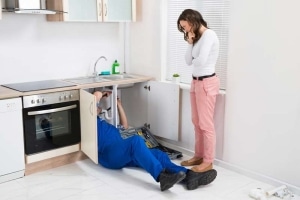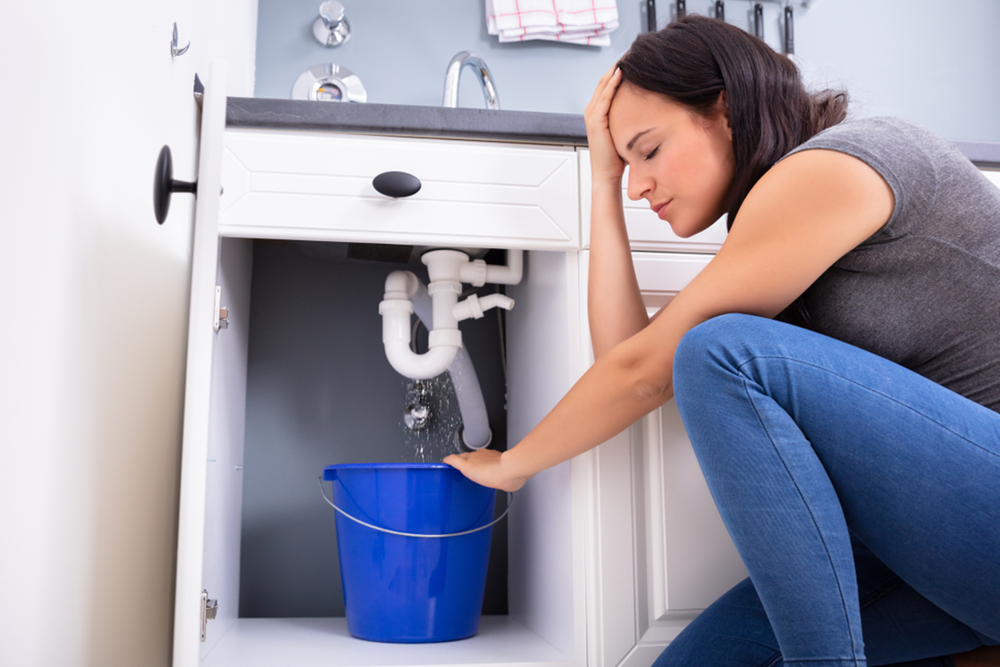Straightforward Ways to Repair a Leaky Waste Disposal Unit
Straightforward Ways to Repair a Leaky Waste Disposal Unit
Blog Article
How do you feel in regards to Why Is ?

Waste disposal unit are important kitchen area home appliances that assist in taking care of food waste successfully. Nonetheless, a dripping waste disposal unit can be a discouraging and untidy issue to handle. Thankfully, several leakages can be taken care of quickly with a few simple actions. In this post, we will talk about exactly how to repair a leaking garbage disposal properly.
Introduction
Garbage disposals are mounted under cooking area sinks and are made to shred food waste into smaller sized pieces, allowing it to go through the plumbing system conveniently. While these tools are normally trusted, leakages can happen over time as a result of deterioration, loose connections, or damages to the unit.
Typical Root Causes Of Leakages in Trash Disposals
Worn Seals and Gaskets
Seals and gaskets play a vital duty in protecting against water from dripping out of the garbage disposal. In time, these components can wear away, leading to leakages around the disposal unit.
Loose Connections
The links in between the waste disposal unit and the plumbing system can come to be loose in time, creating water to leakage out during operation.
Splits or Holes in the Disposal Device
Physical damage to the garbage disposal, such as splits or openings in the housing, can likewise result in leakages.
Determining the Resource of the Leakage
Before trying to fix a dripping waste disposal unit, it is necessary to determine the source of the leak. This can commonly be done with aesthetic evaluation or by conducting easy examinations.
Visual Evaluation
Check the garbage disposal device carefully for any signs of water leakage. Pay very close attention to areas around seals, gaskets, and link factors.
Examining for Leaks
One method to check for leakages is by running water through the disposal system and checking for any visible signs of leakage.
Devices and Materials Needed for Taking Care Of a Dripping Waste Disposal Unit
Before beginning the repair service procedure, gather the needed devices and materials, including a screwdriver, flexible wrench, plumber's putty, replacement seals or gaskets, and epoxy or patching material for repairing splits or openings.
Step-by-Step Guide to Repairing a Leaking Waste Disposal Unit
Shut off the Power
Before attempting any kind of repair work, guarantee that the power to the waste disposal unit unit is shut off to prevent the danger of electrical shock.
Locate the Leakage
Determine the specific location of the leakage and establish the reason.
Tighten up Links
Utilize a wrench to tighten any loose links between the disposal unit and the plumbing system.
Change Seals or Gaskets
If the leakage is because of used seals or gaskets, eliminate the old components and replace them with new ones.
Patching Fractures or Holes
For splits or openings in the disposal device, use epoxy or an ideal patching product to seal the broken location.
Checking the Waste Disposal Unit After Repair Service
Once the fixing is total, examine the garbage disposal by running water with it to make sure that the leak has been solved.
Preventive Maintenance Tips to Avoid Future Leakages
To prevent future leaks, it is necessary to execute normal maintenance on your waste disposal unit. This includes maintaining it clean, staying clear of putting non-food products or tough things down the disposal, and regularly looking for leaks or various other concerns.
Final thought
Finally, repairing a dripping waste disposal unit is a relatively uncomplicated procedure that can be completed with fundamental devices and materials. By complying with the actions outlined in this write-up and practicing precautionary upkeep, you can keep your garbage disposal in good working problem and stay clear of expensive fixings in the future.
What to Do About a Leaking Garbage Disposal
A leaking garbage disposal often goes unnoticed until you confront a sopping cabinet, a foul-smelling puddle, or an audible drip-drip-drip from the unit. The fix can be frustrating, too, because the leak can stem from a number of components in the system. Fortunately, with a little sleuthing, you can zero in on the leak and—depending on the exact location—stop the icky oozing and repair the component that caused it. Worst case scenario, if it turns out that the garbage disposal must be replaced, installing a new one is a reasonable do-it-yourself task for those with basic plumbing skills. Read on to keep the cash you’d otherwise hand over to a pro.
Prepare to find the leak
Prior to testing the garbage disposal for leaks, unplug it at the wall outlet and turn off the power from the breaker box to prevent electrical shock. Then insert a watertight sink stopper into your sink drain and wipe the unit dry with a clean cloth. In any handy container, mix a few drops of food coloring into a few cups of water, and pour the dyed water onto the sink stopper to help you locate the leak.
Investigate the source
the top, where the disposal meets the sink drain the side, where the dishwasher hose or main drain pipe connects to the disposal or the bottom of the unit Inspect each of these locations while gliding a light-colored rag over the unit; the dyed water will readily show on the rag and reveal the location of the leak. If a leak isn’t immediately apparent, remove the sink stopper and pour a few more cups of dyed water down the sink drain, then check for leaks again. Leaks near the top of the unit are more likely to show themselves while the sink is plugged, while side and bottom leaks are more noticeable while the sink is unplugged.
The metal sink flange that sits directly inside the sink drain is typically sealed around the top with plumber’s putty (a clay-like sealant) and then secured from under the sink with bolts. If the plumber’s putty deteriorates, or the bolts loosen, the flange can no longer form a watertight seal between the sink drain and the disposal—which could cause a leak at the top of the unit.
To reseal the leaky flange, you must first detach the garbage disposal. Start by loosening the screws securing the main drain pipe to the disposal, then loosen the screws in the metal clamp securing the dishwasher hose to the disposal and detach the drain pipe and dishwasher hose from the disposal. Loosen the screws in the mounting ring that connects the disposal to the metal mounting assembly beneath the sink, then pull down the disposal and carefully set it on a clean, dry surface. Loosen the bolts in the mounting assembly with a wrench, then pull down the mounting assembly and set it near the disposal.

Hopefully you liked our topic on The Handy Guide To Fixing Your Garbage Disposal Leaking. Many thanks for taking the time to read through our piece. So long as you enjoyed our blog entry kindly don't forget to pass it around. Many thanks for your time. Kindly visit our blog back soon.
Call Today Report this page